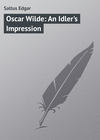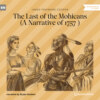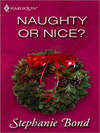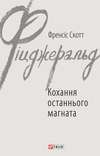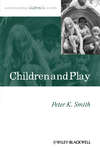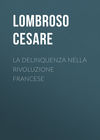Kitabı oku: «The Man of Genius», sayfa 13
CHAPTER II.
Art in the Insane
Geographical distribution – Profession – Influence of the special form of alienation – Originality – Eccentricity – Symbolism – Obscenity – Criminality and moral insanity – Uselessness – Insanity as a subject – Absurdity – Uniformity – Summary – Music among the insane.
THOUGH the artistic tendency is very pronounced, and might almost be called a general characteristic, in some varieties of insanity, few authors have paid sufficient attention to it.
The only exceptions are Tardieu, who, in his Études Médico-Légales sur la folie, remarks that the drawings of the insane are of great importance from the point of view of forensic medicine; Simon,311 who, in speaking of drawing among megalomaniacs, observes that the imagination appears in them in inverse proportion to the intellect; and Frigerio, who some time later gave a survey of the subject in an excellent essay, published in the Diario del Manicomio di Pesaro.312 Since then I have been able to make a completer examination of this subject, thanks to the curious documents supplied to me by MM. Riva, Toselli, Lolli, Frigerio, Tamburini, Maragliano, and Maxime du Camp.
By comparing their observations with my own, I find a total of 108 mental patients with artistic tendencies, of which: – 46 were towards painting, 10 sculpture, 11 engraving, 8 music, 5 architecture, 28 poetry.
The prevailing psychopathic forms in these 108 cases were: – In 25, sensorial monomania and that of persecution; 21 dementia, 16 megalomania, 14 acute or intermittent mania, 8 melancholia, 8 general paralysis, 5 moral insanity, 2 epilepsy.
It is evident that those which predominate are the congenital and least readily curable forms (monomania and moral insanity), together with dementia, and those forms which it accompanies, or in which it is latent (megalomania and paralysis).
Let us now consider the special characteristics of these insane artists.
Geographical distribution.– In the districts where the artistic tendency is more marked among the sane, the number of insane artists is also higher. In fact, I have found very few of the latter at Turin, Pavia, or Reggio, while at Perugia, Lucca, and Siena they abound.
Profession.– Only in a few cases could the tendency be explained by profession or habits acquired before the appearance of the disease. We find among the insane artists mentioned above – 8 ex-painters or sculptors, 10 ex-architects, carpenters, or cabinet makers; 10 former schoolmasters or priests, 1 telegraphist, 2 students, 6 sailors, soldiers, or officers of engineers.
Among modern painters affected with insanity, we may note Gill, Cham, Chirico, Mancini, and others.
In some cases, former tendencies were accentuated by insanity. Thus, a mechanician made drawings of machines, two sailors constructed models of ships, a major-domo traced, on the floor, pictures of tables prepared for a banquet, with pyramids of fruit. At Reggio, a cabinet-maker carved some very fine foliage and ornaments; a naval officer at Genoa at first carved models of ships, and afterwards was continually occupied in depicting – though he had never learnt to paint – scenes at sea which, he said, consoled him for being debarred from his favourite element.
Sometimes these men were inspired by insanity with a strange energy in their work, “just as if,” as MM. de Paoli and Adriani wrote to me, “they had been paid for it. They cover the walls, the tables, and even the floor, with painting.” One of them, a painter, who had formerly only reached mediocrity, attained such perfection through his malady, that a copy of one of Raphael’s Madonnas, executed by him during one of his attacks, gained a prize medal at the Exhibition.
Mignoni, the celebrated painter of Reggio, who became an inmate of the asylum at that town on account of dementia and megalomania, remained idle there for fourteen years. At last, at the suggestion of Dr. Zani, he resumed his brush, and covered the walls of the asylum with excellent frescoes. One of them represented the story of Count Ugolino so vividly, that one of the patients began to throw meat at it, so that the father and children might not die of hunger, and the grease spots are still to be seen.313
Of eight painters, whose history Adriani has related to me, four kept their former skill while under the influence of acute or intermittent mania; in two others, it was so far weakened that one of them, after his recovery, sincerely deplored the work done during his illness.
Influence of the special form of Insanity.– In many cases, the choice of subject is inspired by the malady. A melancholiac was continually carving a figure of a man with a skull in his hand. A woman affected with megalomania was always working the word DIO (God) into her embroidery. Most monomaniacs habitually allude to their imaginary misfortunes by means of special emblems.
A monomaniac, who laboured under the delusion that he was being persecuted, drew his enemies pursuing him on one side of the picture and Justice defending him on the other.
Alcoholic maniacs often make an excessive use of yellow in their pictures. One painter, in whom alcohol had completely destroyed the sense of colour, became very skilful in the rendering of white, and, between his drunken fits, became the best painter of snow-scenes in France.
An artist of note, C – , when affected with general paralysis, lost his sense of proportion, e. g., he began to sketch a tree which, if drawn in its entirety, would have reached beyond the frame of the picture. He collected the poorest oleographs and admired them, and coloured everything green.
It is more usual, however, for insanity to transform into painters persons who have never been accustomed to handle a brush, than for it to improve skilled artists. Sometimes the disease, while suppressing some qualities of value to art, causes the appearance of others which did not previously exist, and gives to all a peculiar character.
Insanity changed Luke Clennell from a painter to a poet,314 while Melmour, a physician who fell into a state of dementia after the loss of his wife, who died on their wedding-day, took to literature and lost his previous aptitudes.
“Exaggeration pushed to its extreme – to the improbable, or even the impossible,” says Regnard, “is one characteristic of paralytics. One of these madmen painted a man touching the stars with his head and the earth with his feet.”315
Daudet, in Jack, speaks of insane artists whose pictures seemed to represent earthquakes or the inside of a ship during a storm.
Individuals, who previously had not the remotest idea of art, are impelled by disease to paint, especially at the periods of strongest excitement. B – , a mason, became a painter while in the Pesaro asylum. His attacks of mania were always announced by an outbreak of his tendency to draw caricatures of the hospital staff, whom he condemned, in effigy, to the strangest punishments. For instance, he painted the cook, a stout and ruddy man, in the attitude of an Ecce Homo, behind a grating which prevented him from touching the most appetising viands. This was the penalty for having refused B – one of his favourite dishes.
The grotesque apotheosis of himself, painted by the pederast and megalomaniac, R – , in which he excretes and fecundates eggs which symbolise worlds, is characteristic of the boundless vanity and unbridled imagination of megalomaniacs and paralytics.
Among the pictures executed by the patients at San Servolo, the most curious is one by a lunatic who, in his lucid intervals, paints fairly well, though with excessive minuteness of detail; but during his attacks this minuteness is so far exaggerated as to become grotesque.
Nothing but an intense religious monomania could have inspired the singular self-crucifixion of the Venetian shoemaker, Matteo Lovat. I have been able to procure an authentic picture of this strange performance which is reproduced below. Shortly afterwards Lovat died in an asylum.316

One patient, G – , was a poor peasant woman, utterly uneducated, in whose family pellagra and insanity were both hereditary. In the long isolation required by her state, she developed great skill (quite unknown before her illness) in embroidering on linen, with coloured threads pulled from her clothing, an extraordinary number of figures, which were faithful representations of her delusions. Her autobiography is, so to speak, traced in this embroidery; in every piece of work she has represented herself, sometimes struggling with the nurses or the nuns, sometimes herding cows, or occupied with other rustic work. Elsewhere she would depict tables spread for meals, with an infinite variety of accessories. But the most singular thing is that the outlines are drawn with a clearness which would be the envy of a professional caricaturist; no shading whatever, four stitches, representing nose, eyes, and mouth, were arranged with so much artistic judgment as to show clearly the individual expression of each face.
Another artist in the same line, though of less striking gifts, is a certain I – , suffering from moral insanity, who shows numerous degenerative symptoms. She, too, embroiders figures of men and women with considerable skill, but always in harmony with her perverted sexual tendencies.317
Originality.– Disease often develops (as we have already seen in the case of insane authors) an originality of invention which may also be observed in mattoids, because their imagination, freed from all restraint, allows of creations from which a more calculating mind would shrink, for fear of absurdity, and because intensity of conviction supports and perfects the work.
At Pesaro there was a woman who drew, or embroidered, by a method peculiar to herself, unravelling cloth, and fastening the threads on paper by means of saliva.
Another embroideress, formerly given to drink, executed butterflies which seemed to be alive. She had applied to white embroidery the methods of coloured work, and was able to produce marvellous effects of light and shade.
At Macerata a patient, with a number of pipe-stems, constructed a model of the front of the asylum; another had the idea of representing a song in sculpture. At Genoa, a dementia patient carved pipes out of coal.
One Zanini, at Reggio, constructed a boot which was unique of its kind, so that, as he said, no one else should be able to put it on. This exceptional foot-gear was open on one side, and tied up with string, its edges were ornamental, and worked with hieroglyphics.
M. L – of Pesaro was constantly making requests to leave the asylum. When told that there was no means of transporting him to his home, he set about constructing one for himself. This was a four-wheeled cart, with an upright pole, at the top of which was a pulley with a rope running through it. One end of the rope was fastened to the axle of the fore-wheels, the other to that of the hind-wheels. An elastic cord was attached to the rope for a distance of four or five centimetres, and by pulling this, first at one end and then at the other, a person standing on the cart was able to make the wheels go round.318
In many arabesques drawn by a megalomaniac, one can trace, carefully hidden among the curves, sometimes a ship, sometimes an animal, a human head, or a railway train, or even landscapes and towns; though the essential character of arabesques is the absence of the human figure.
The best asylums of Italy have sent to the exhibitions of Siena and Voghera, models in relief of their respective buildings, admirably executed by some of the patients. That of the asylum at Reggio could be taken to pieces, and showed the inside arrangements, staircases, rooms, with their furniture, &c., all carefully finished. Even the trees, I am told, were copied accurately from nature.
A canon, who had no technical knowledge of architecture, began, after an attack of melancholia, to construct with cardboard and papier-mâché, models of temples and amphitheatres, which excited great admiration.
Dr. Virgilio has made me a present of some portraits of Italian specialists, nearly all of them exceedingly lifelike, the work of a melancholia patient. The note of originality only comes out in some accessory introduced into each picture, such as a fly, or a butterfly, repeated persistently in every copy, or in the way in which the artist’s name is worked into the painting, in vertical lines so as to form some sort of decorative ornament.
A work of extreme though useless skill and originality is the self-crucifixion of Lovat, already mentioned.
“The monomaniac, King Louis of Bavaria, was the first who entirely understood Wagner. His prodigality in spending money, and the creation of the theatre at Bayreuth – one of his most original conceptions – have been known for years, but the greatest manifestation of his genius is known only to a few. Three castles, three palaces of splendid and indescribable beauty, rose from the earth, as if by enchantment. He superintended even the minutest details himself. King Louis’s madness was a dream with his eyes open. By himself, in the space of ten years, he accomplished more than any twenty sovereigns, aided by the artistic genius of the best ages. Certainly no one, at the present day, could produce another such hall, 75 mètres in length (without counting the two rooms at either end, which would bring the length up to 100 mètres), a gallery illuminated by 17 great windows, 33 rock-crystal chandeliers, 44 candelabra, and who knows what else!”319
Eccentricity.– But even originality ends by degenerating, in all, or nearly all, into mere eccentricity, which only seems logical when one enters into the idea of the delusion.
Simon remarks that, in manias of persecution, and in paralytic megalomania, the greater the mental disturbance the livelier the imagination, and the more grotesque the fancies engendered by it. He mentions the case of a painter, who declared that he could see the interior of the earth, filled with houses of crystal, illuminated by electric light, and pervaded by sweet odours. He described the city of Emma, whose inhabitants have two noses and two mouths – one for ordinary food, the other for sweet things – a silver chin, golden hair, three or four arms, and only one leg resting on a little wheel.320
These bizarre creations arise in great part from the strange hallucinations to which the patients are subject. We may see an example of this in the four-legged and seven-headed beasts painted by Lazzaretti on his banners. A melancholiac made himself a cuirass of stones, to defend himself against his enemies. Another would continue all day drawing the map of the stains left by damp on the walls of his room. Later on it was discovered that he believed those lines to represent the topography of the regions which God had given him to rule over on earth.
This is one of the reasons why, sometimes, greater excellence in art is found in cases of dementia, than in those of mania or melancholia.
Symbolism.– Another characteristic trait of art in the insane is the mingling of inscriptions and drawings, and, in the latter, the abundance of symbols and hieroglyphics. All this closely recalls Japanese and Indian pictures, and the ancient wall-paintings of Egypt, and is due in part to the same cause at work in these – the need of helping out speech or picture, each powerless by itself to express a given idea with the requisite energy.
This cause is very evident in a case communicated to me by Dr. Monti, in which an architectural design, though well and accurately drawn, was rendered incomprehensible by the numerous inscriptions, often in rhyme, which had been crowded into it by its author, an aphasiac, who had suffered from dementia for fifteen years.
In some megalomaniacs this happens through the fancy they have for expressing their ideas in a language different from that of ordinary human beings. Such was the case of the master of the world, fully treated of elsewhere, by M. Toselli and myself.321
The patient in question was a peasant named G – L – , 63 years of age, with an easy and confident bearing, prominent cheek-bones, spacious forehead, and expressive and penetrating look. Cranial capacity 1544, index 82, temperature, 37° 6´.
In the autumn of 1871 he became noted for vagrancy and excessive loquacity; he stopped the most notable persons of the village in public places, complaining of injustice which he alleged himself to have suffered; he destroyed the vines, devastated the fields, and rushed about the streets, threatening terrible vengeance.
Gradually he began to identify himself with the Deity, and believe himself ruler of the universe, and preached in the Cathedral of Alba on his lofty destiny. In the asylum he remained calm as long as he was able to believe that his power was recognized by every one, but at the first show of opposition he threatened – in the character of ruler and personification of the elements, calling himself sometimes the son, sometimes the brother, or at others the father of the sun – to convulse the world with earthquakes, overthrow kingdoms and empires, and erect his throne on the ruins. He was tired, he said, of keeping up so many armies, and providing for so many idle persons; it would be but just if the authorities and the rich were at least to send him a large sum of money, to redeem themselves from what he called “the debts of death.” In return for this payment he would allow them to live for ever. The poor ought all to die, as useless persons, and it was preposterous that he had to support so many madmen in his own palace. He therefore suggested to the doctor that it would be well to cut their heads off; yet he waited on them with the greatest unselfishness when they were ill, an inconsistency which is among the characteristics of paranoia.
He usually bestowed his scanty earnings on some rogue whom he entrusted with letters and commissions for the other world, addressed to the sun, the stars, the weather, Death, the lightning, and other powers, whose help he was in the habit of invoking, and with whom he held confidential conversations at night. He was quite pleased when some calamity had desolated the country, this being the beginning of the judgments threatened by him, and a sign that the weather, the sun, or the lightning, had obeyed him.
He kept in a trunk some roughly-fashioned crowns which, he said, were the true royal and imperial crowns of Italy, France, and other states. Those worn by the actual sovereigns of these states were no longer of any value, having been usurped by wretched men, doomed to speedy destruction, unless they paid him their debts of death, in letters of exchange to the amount of several hundred millions.
But his most characteristic eccentricities were the writings in which his delusion was manifested. Although able to read and write, he scorned the use of the ordinary kind of writing, and, in a character of his own, scrawled letters, orders, and cheques, to the Sun, to Death, or to the civil and military authorities. He always had his pockets full of these documents. His writing consisted mainly of large capital letters, mixed, at intervals, with signs and figures indicating objects or persons. The words are usually separated by one or two large dots, and he only wrote some of the letters of each word (nearly always the consonants) without any respect for the laws of syllabation. In some of his writings, the alphabet almost entirely disappears.
For instance, in order to demonstrate his effective power, he sketched a series of rough figures representing the elements and powers which were his familiar spirits, – the army ready, at a sign from him, to make war on all terrestrial powers contending with him for the dominion of the world. These are – 1. The Eternal Father. 2. The Holy Spirit. 3. St. Martin. 4. Death. 5. Time. 6. Thunder. 7. Lightning. 8. Earthquake. 9. The Sun. 10. The Moon. 11. Fire (his minister of war). 12. A very powerful man who has lived ever since the beginning of the world, and is G. L.’s brother. 13. The Lion of Hell. 14. Bread. 15. Wine. The whole is followed of his usual signature – a two-headed eagle. Each of these powers is also indicated by letters placed beneath the figures, thus, the 1st=P. D. E.; the 2nd=L. S. P. S., &c.
This mixture of letters, hieroglyphics, and figurative signs, constitutes a kind of writing recalling the phonetico-ideographic stage through which primitive peoples (the Mexicans and Chinese certainly) passed, before the discovery of alphabetic writing.
Among the savages of America and Australia, writing consists in a more or less rough kind of painting; e. g., to indicate, “would that I had the swiftness of a bird,” they depict a man with wings instead of arms.322 These characters are not so much writing as aids to memory still further connected together and vivified by traditional songs or stories.
Some tribes, however, have attained to a somewhat less imperfect mode, which resembles our rebus; for instance, the Maya of America, to signify a physician, painted a man with a herb in his hand and wings to his feet; an evident allusion to the rapidity with which he is obliged to hasten to those who require him. Rain is represented by a bucket.323
The ancient Chinese represented malice by means of three women, light by the sun and moon, and the verb to listen by an ear between two doors.
This primitive writing shows us that the rhetorical tropes and figures of which our pedants are so proud, are expressions of poverty rather than wealth on the part of the intellect. In fact, they are frequently found in the speech of idiots and of educated deaf-mutes.
After having used this system for a considerable time, some more civilised races, such as the Chinese and Mexicans, took another step forward. They classified the more or less picturesque figures referred to above, and succeeded in forming ingenious combinations which, without directly representing the idea, indirectly suggested a reminiscence of it, as in our charades. Besides this, to prevent any uncertainty on the reader’s part, they placed either before or after these signs a sketch of the object to be expressed – a scanty remnant of the actual picture-writing of a previous age. This certainly took place at a time when – the language once being fixed – it was observed how some people, in writing down a given sign, recalled the sound of the words which it suggested. Thus Itzicoatl, the name of a Mexican king, was written by drawing a serpent (Coatl, in Mexican) and a lance (Itzli); thus, too, in Chinese, the character tschen represents boat, lance, and table.324
Our megalomaniac, by reviving this custom, affords one more proof that, in the visible manifestation of their thoughts, the insane frequently revert (as also do criminals) to the prehistoric stage of civilization. In the present case, it is quite easy to understand by what mental process G – came to use this mode of writing. Under the megalomaniac delusion, believing himself lord of the elements, superior to all known or imaginable forces, he could not make himself properly understood with the common words of ignorant and incredulous men; neither could ordinary writing suffice to express ideas so new and marvellous. The lion’s claws, the eagle’s beak, the serpent’s tongue, the lightning-flash, the sun’s rays, the arms of the savage, were much worthier of him, and more calculated to inspire men with fear and respect for his person.
Nor is this an isolated case. One quite analogous to it is described by Raggi in his excellent study of the writings of the insane. Prof. Morselli has furnished me with another and still more interesting instance.
“The patient A. T – ” he writes, “was a joiner and cabinet-maker; he had a certain skill in wood-carving, and his furniture was much sought after.325 About seven years ago he was attacked with mental disease, apparently melancholia, and tried to commit suicide by throwing himself from the roof of the town hall. He is now subject to attacks of excitement with systematized delusions. His predominant ideas are political – republican and anarchist – on a certain groundwork of ambition. He fancies himself changed into some great criminal; sometimes he is Gasperone, sometimes Il Passatore, at others Passanante. He is always drawing or carving, and his work generally takes the form of trophies or allegorical figures.
“The most curious of all these is a piece of carving which represents a man dressed as a soldier, provided with wings, and standing on an inlaid pedestal covered with allegorical inscriptions. This figure has a trophy on its head, and other objects are carved on or around it, each of which expresses emblematically some one of T – ’s delusions. For instance, the wings recall the fact that, when his first attack came on, he was in the square at Porto Recanati, selling his carvings, among which were several figures of angels, at a soldo a-piece. The ‘Medal of the order of the Pig’ is a token of contempt, wherewith he would like to decorate all the rich and powerful of the earth. The helmet, with a lantern hanging to the vizor (a reminiscence of Offenbach’s Brigands), symbolises the gendarmes who escorted him to the asylum. The cigar placed crosswise (note the position) represents his disdain for kings and tyrants; and the position of the leg recalls a fracture of that limb sustained by him in his attempt at suicide.
“The inscriptions on the pedestal are scraps of verse or extracts from newspapers which T – is always quoting, and to which he attaches some mysterious significance. They always, however, refer to the state of slavery to which he is reduced (i. e., his detention in the asylum), and the vengeance he will one day wreak on his captors.
“The most remarkable thing, however, is the trophy resting on the head of the figure, which is the graphic expression, so to speak, of a song326 either written by him or adapted from other popular poetry. Each phrase of the song has its symbol in the trophy. Thus the word poison in the first verse is represented by the cup; the two daggers are likewise present; the end of life and the tomb are figured by a kind of sarcophagus or closed chest; love by two sprays of flowers. The bell of the second stanza is easily recognisable; the funereal music are the two trumpets crossed, lower down. The cross of the third stanza, and the priest (represented by a clerical hat) are not forgotten. It is curious that the gallows should be wanting to complete this trophy. The spoon and fork, by the by, are T – ’s favourite implements. They denote that he eats and drinks in slavery, or, as he says, in a convict-prison; and for this reason, he always wears a set, carved in wood by himself, in the button-hole of his coat, or in his cap.”
We may once more remind the reader that savages hand down their history by associating picture-signs with poetry.
A most interesting example of elaborate symbolic faculty in a monomaniac, combined with higher artistic power than is usually found among the insane, has been recorded with very full illustrations by Dr. William Noyes.327 This patient studied art at Paris under Gérome and returned to America to become an illustrator of books and magazines. He developed systematic religious delusions, and frequently worked them out in very beautiful and artistic shapes, nine of which, all executed in the asylum at which he was confined, are here reproduced. The circular design is one of a series of twelve charts (one for each of the tribes of Israel) illustrating the progress of the Holy Spirit. They were all delicately coloured in water colours, the fine shading making it very difficult to give in black and white an adequate idea of the beauty of the original.

“In the centre is the dove representing the Holy Spirit, and surrounding it are seven different crosses [St. Andrew, St. Colomba, St. George, St. Michael, The Prophet, St. Evangeli, Royal Priesthood], and a close study will show the seven crosses, most ingeniously worked together. It is probable that in looking at the design closely for the first time one will suddenly see a new cross take shape before his eyes, and this indeed is what the patient says occurs with him. In describing the crosses he will say, for example, that in drawing the cross of St. Andrew the lines suddenly took a new shape and he found he had also made a cross of St. Michael. This to him is a matter of deep significance, and he feels that, his work is directly controlled by a higher power, and that the work of his fancy is really inspired.
“Outside these central crosses are the names of three ancient deities who were each characterized by some special attribute, and under these the parts of the body that the artist conceives these deities especially to have represented, and then comes the name of the Biblical personage in whom these elements were finally exemplified and embodied. To the left of the dove is Venus, representing Blood, exemplified in Moses; above is Osiris, representing Flesh, embodied in Adam; and to the right Psyche, representing Water, typified in Noah. These three are but the gross and material parts of Man, representing indeed necessary steps in his progress through life, but secondary and subordinate to the higher part of his nature represented by Truth and the Spirit – which receive their ultimate embodiment in Christ.
“The Lion denotes Might, and the Eagle signifies Emulation; but it is uncertain just what symbolism is connected with the serpent twining round the cross, and the open book crossed by a sword and pen, unless indeed this last may mean the Bible with the emblems of peace and war lying quietly within it, and it seems not unlikely that the serpent is emblematic of the Betrayal. For the rest of the design, however, we need make no inferences, as it corresponds closely with his description.
“Outside of the circle enclosing the crosses are the seals, sealing the Holy Spirit. In the large light triangles, or rather rays of the sun, are given the names of the twelve apostles, forming the Seal of the Prophet. Above these, in the same space, are the signs of the zodiac in the extreme points of the triangle, with the names of the parts of the body underneath, that these signs correspond to in the ancient mythology; this forms the Seal of the Zodiac. Between these large light coloured triangles are the twelve holy stones, represented as ovals, and with their names plainly distinguished in the cut, making the Seal of the Holy Stones. In the small triangles directly above the Holy Stones are given the names of the twelve tribes of Israel, but the colour of these in the chart (vermilion) is such that the lettering does not come out in the photographic negative. This gives the Seal of the Twelve Tribes. Directly beneath the Holy Stones, filling in the space between the bottom of each large triangle, is the Seal of the Germ, coloured dark green, and running down on each side of the top of these large triangles are small triangles, coloured dark red and forming the Seal of the Aceldama or Bloody Seal. On the circumference are the names of the constellations of the zodiac, and directly under these the names of the corresponding months of the year, and under these again are the mythological representations of the constellations, Leo (July) being at the top, and then in order to the right come Virgo (August), Libra (September), Scorpio (October), Sagittarius (November), Capricornus (December), Aquarius (January), Pisces (February), Aries (March), Taurus (April), Gemini (May), Cancer (June). This gives the last sealing of the Seed, the Seal of the Sun.
“The mournful bell shall sound for my death, and thou shall listen wonderingly to that funereal harmony. – I will love thee, &c.
“A long and sad cross (i. e., procession) thou shalt see passing along the road, and a priest standing by the gallows, reciting the Miserere. – I will love thee, &c.”



